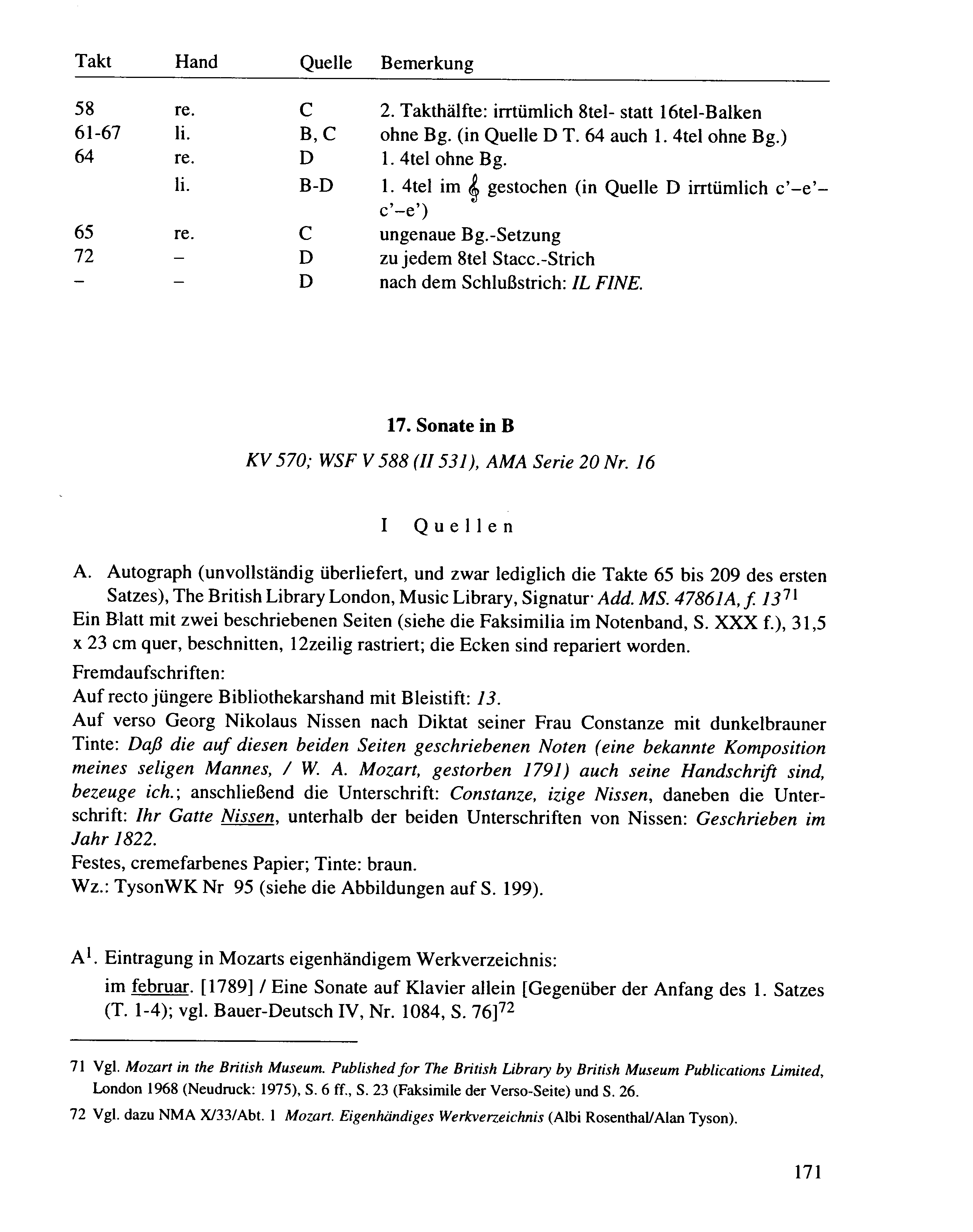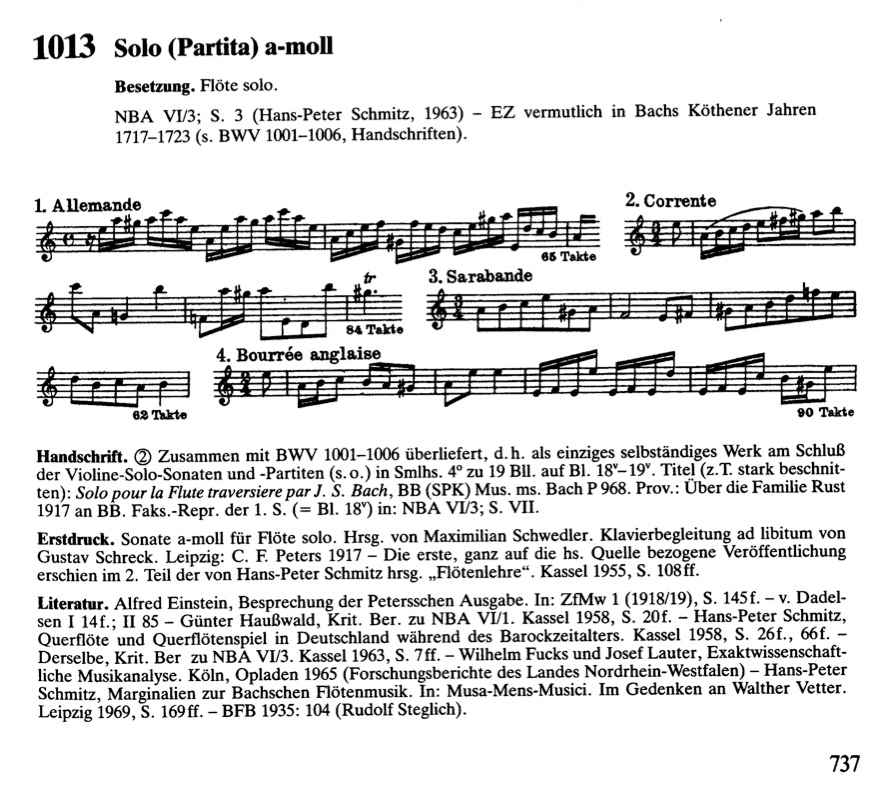Kelvin Smith Library
This is Series 9, Work Group 25, p, 171 from the Kritische Berichte to the Neue Mozart Ausgabe. This example provides two kinds of material on the same page. What you see at the top of the page are variant readings of the well-known Rondo from the Piano Sonata in C, K. 545. In this table, we have measure (Takt), Hand (recto or verso) Source (Quelle) and remarks. Quelle A here is always the autograph, which doesn't exist for this piece. The others are early prints; B is the first edition in 1805, C another edition from 1805, D from 1809. (That's all on p. 168)

Let's look at Measure 58. In the notes, there's a 2 with a dot after it. This is the German abbreviation for ordinal numbers (first, second, third). So in the second (zweite) half of the measure (Takthälfte), source C is missing one of its beams, so that there are 4 eighths instead of 4 sixteenths. Most of the rest are slur issues. In Source D, every eighth in m. 72 has a staccato slash, and after the final bar, "IL FINE" ("The end")
Then we move on to the Sonata in Bb, K 570. Here we have an autograph -- sort of. It's very incomplete; in fact, we only have m. 65-209 of the first movement, We have a location and manuscript number (British Library), and a physical description: one sheet (Blatt) with both sides (Seiten) written on. There's a facsimile in the music volume (Notenband). We have dimensions, how many staves are on the paper (12), and that the corners (Ecken) have been repaired. The paper is cream-colored (cremefarbenes), and the ink (Tinte) is brown (braun)
On this sheet, there's quite a bit of writing that is not Mozart's. In a more-recent librarian's hand (jungere Bibliothekarshand) is pencilled (mit Bleistift) number 13. And there's a big certification by Constanze (Mozart) Nissen, in the hand of her 2nd husband, that this is a real Mozart manuscript.
Source A1 is the entry in Mozart's autograph (eigenhändigem) work catalog (Werkverzeichnis)

This is for (Besetzung) solo flute. It appears in the Neue Bach Ausgabe (NBA), Ser. 6, Band 3, p. 3. time of creation (EZ = Erstehungszeitz) is probably Bach's Köthen period. Schmieder uses many abbreviations, which are on p. XXXVII of the catalog. See that number in the circle? That's the Schmieder system to show how close the manuscript is to Bach's own hand, with 1 being an autograph and 5 being from the early 19th century (6 is for lost manuscripts). So it's contemporaneous with Bach. It's at the end of a manuscript of the Sonatas and Partitas for solo violin, which has 19 sheets (Bll. = Blätter), of which this is sheets 18 and 19.
We saw with the Mozart above that often the first printing (Erstdruck) is our best source. But here the first printing was not until 1917 (i.e., after The Rite of Spring) and actually the second publication was closer to an Urtext edition.